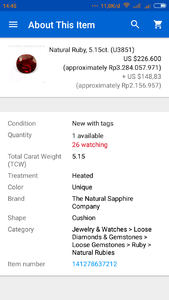amc80
Ideal_Rock
- Joined
- Jun 18, 2010
- Messages
- 5,765
Just watched the first episode. It seems a little less made up than Gem Hunt (or is it Gem Hunters, I can never remember). Sunset rubies are sure pretty. Can someone tell me more about them? Are they really as rare and expensive as the show made them out to be?






300x240.png)